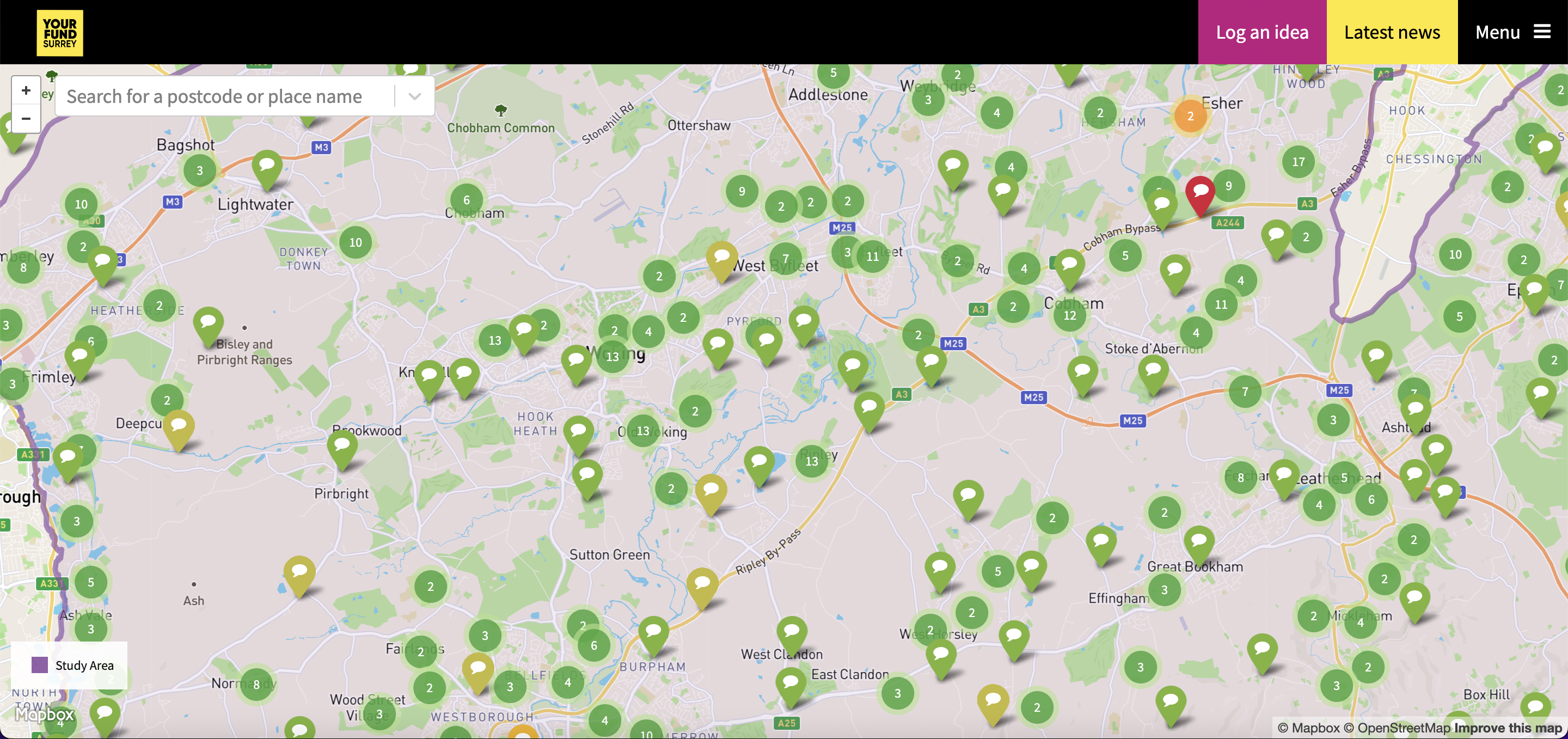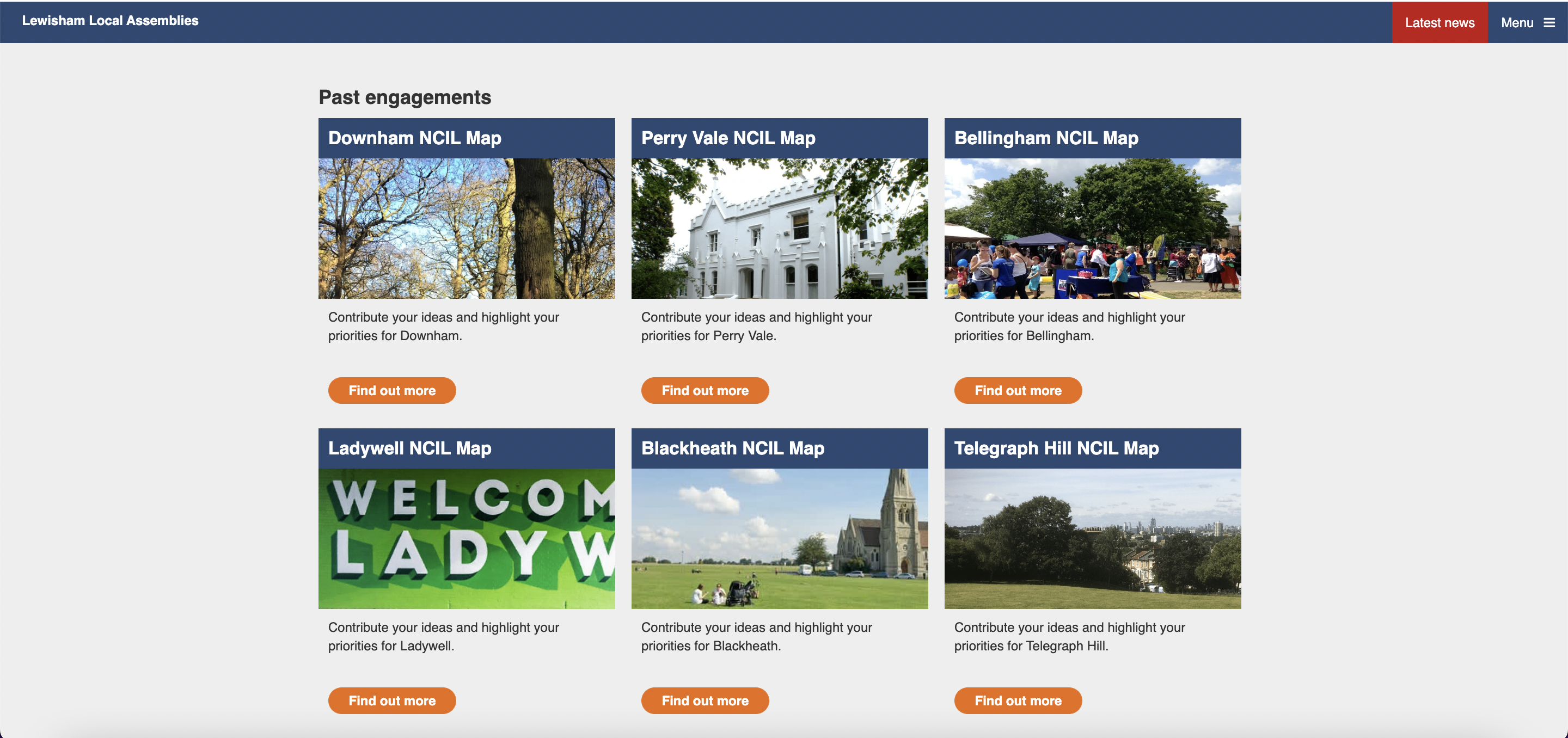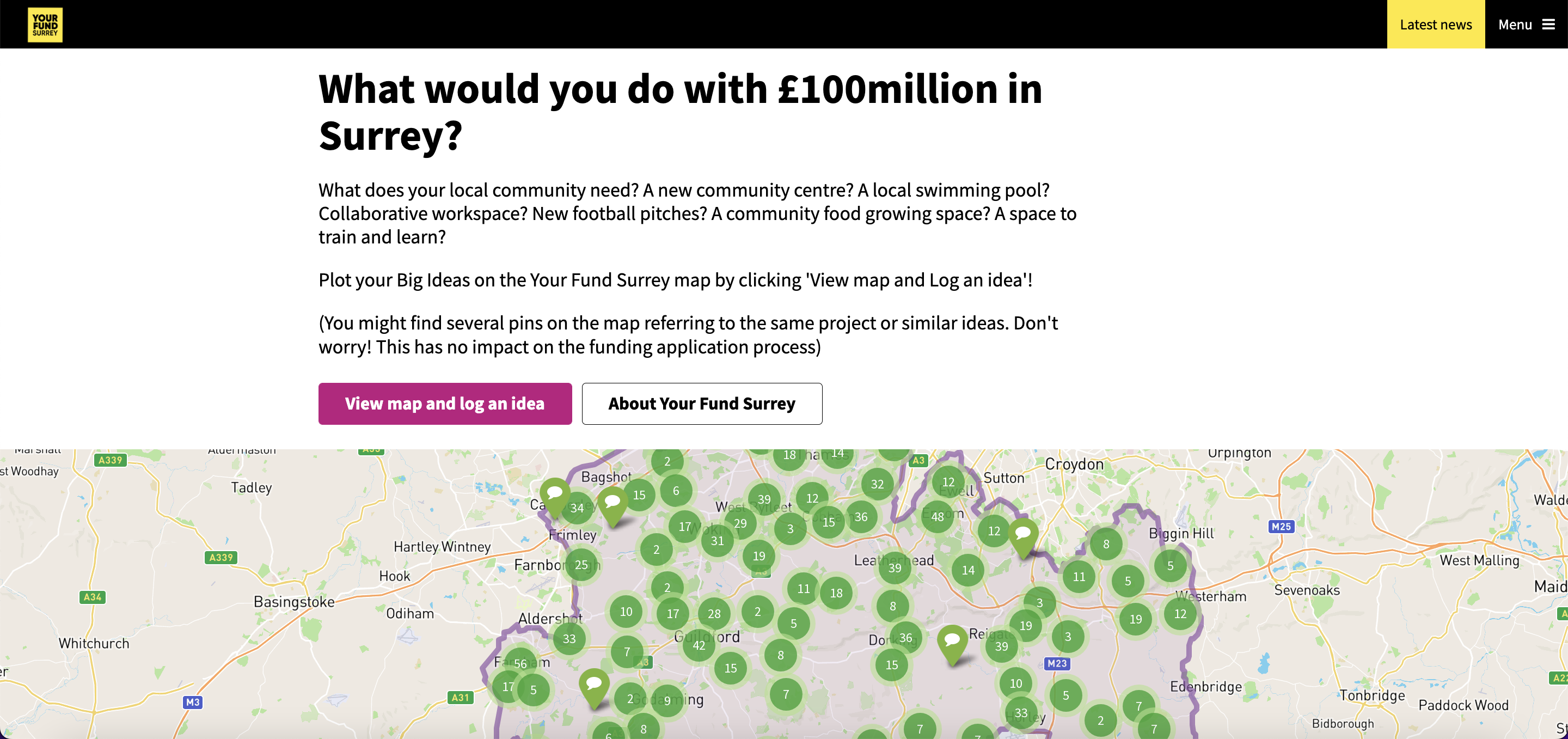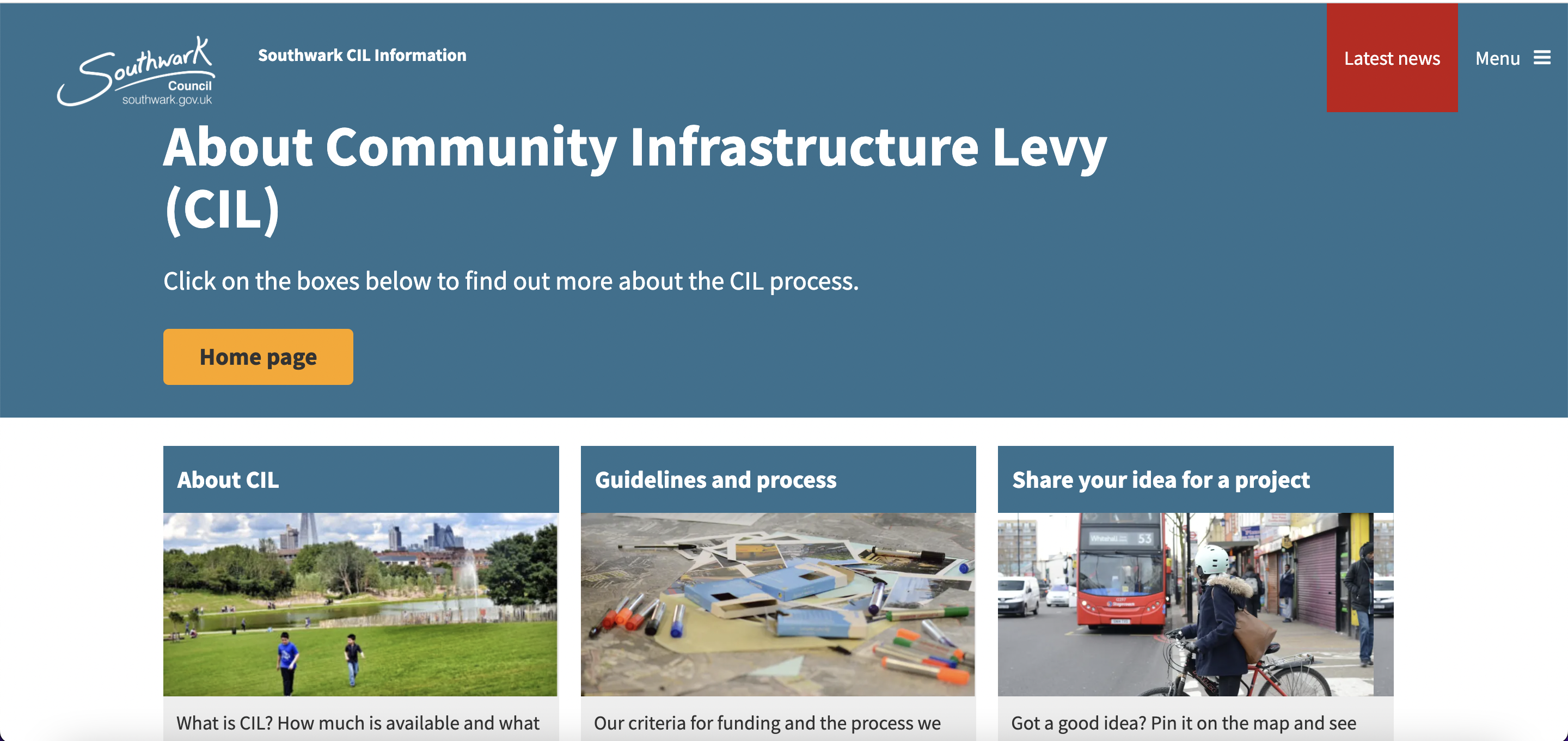NCIL funding: Creating a community-centred engagement plan

By Charlotte Cooper | 27/06/22 16:17
4 min read
Community grant money like NCILs can be allocated for a number of different objectives, but it’s crucial that it’s being used in line with existing community needs. How to assess those? This is where digital engagement comes in.
See how Commonplace can help you make the most of your community funding with a free personalised demo.
What are NCILS? Brought into play in 2010, the Community Infrastructure Levy (CIL) became the Labour Government’s preferred way of obtaining finance from developers for infrastructure. Neighbourhood Community Infrastructure Levies (NCILs) emerged from this as a part of the fund that’s set aside to solely be spent on neighbourhood priorities. At present, 138 local councils have adopted a CIL funding schedule to make sure local infrastructure best matches the needs of the community. This can be infrastructure, community programmes or anything else agreed upon by the community and local authorities that fits in with their vision of improving the space.
For a full history of CILs and the NCILs as part of them, make sure to check out the parliamentary report.
Allocation of NCILs is an opportunity to respond to the aspirations of relatively small communities, often at the level of a single ward or a specific, locally-valued facility. To make the most of this opportunity requires a process that can express the priorities of the whole community and help reach agreement in order to best utilise the funds. This is where a community-led engagement comes in. A digital consultation gives the residents the power to submit ideas and help decide exactly where this money will go. We’ve put together a Commonplace guide with examples to show how to spread the word, gather insightful data and how to include all parts of the community in using Levy funds to better their neighbourhood.
Let’s get started.
NCILs: a community engagement checklist

When it comes to receiving and then allocating these funds, it’s important to make sure that the entire community is aware of them and can shape s the way they are used. They are community and neighbourhood grants after all, so are you doing all you can to make sure that every neighbourhood is involved?
Here’s a handy checklist to consider when allocating NCILs:
Engagement: Is the community aware of the grant and have they been shown how they can be involved? Have questions like ‘what are NCILs?’ been clearly answered?
Reach and visibility: Are you aware of how widely the community knows about your funding? By utilising a survey or a Heatmap before the grants are allocated, you can collect location data and see who isn’t getting involved. The data can be segmented by geography, age, ethnicity and more so councils can see exactly which parts of the community are unaware.Publicity and community dialogue can then be increased in those areas to make sure that a full set of local priorities are being recognised.
Directing information: It’s crucial that all information about the NCIL, what it is and your funding priorities is easily accessible.
Funding priorities: By opening an engagement before NCIL or CIL money has been awarded, you can get the community’s views on what the funding priorities should be and then shape your plan accordingly. With a NCIL, you can even set up a website per ward to help the neighbourhood-scale fund allocation and reinforce people’s sense of local belonging.
Fighting bias: Being able to map who is aware of NCIL funding can help fight systematic bias that exists by making sure as much of the community as possible is having their priorities listened to.
Forms: If you’re expecting a small amount of forms to be filled out manually, this can also be done on an engagement website like Commonplace. Otherwise, large numbers will require a grant management system to best sort the information.
NCIL: Lewisham Local Assemblies

Lewisham’s 2019 Neighbourhood Community Infrastructure Levy consultation, the first of its kind for a local authority, gave residents the power to vote to decide where the funding goes. In another first, NCIL money was redistributed among the borough’s most deprived areas, as part of the Council’s ongoing work to tackle inequality.
The NCIL Ward Fund was launched in August 2019 with over 137,000 flyers being delivered to households within the borough. These invited people to visit their Commonplace to leave their thoughts on funding priorities. Each ward had its own Commonplace website with its own localised web address and imagery.
Using the engagement website, people were asked to either identify issues within the ward that they would like to see addressed or submit ideas for projects that would benefit them. Thanks to the “Agree” feature on Commonplace, all users could read through the suggestions and ‘like’ ideas already submitted to help gauge the popularity of suggestions. (Learn more about the “Agree” function here).
By the time the engagement ended, there were almost 18,000 contributions (comments and agreements) on the Commonplace NCIL consultation. Council Officers reviewed and analysed all the comments and suggestions for each ward and breaking them down into priority areas.
Community funding: Your Fund Surrey

Surrey County Council has allocated community funds of up to £100m to be used over the next five years on projects that improve communities’ local areas.
The fund, named Your Fund Surrey, aims to empower communities by:
- Connecting residents and community groups to build ideas
- Stimulating local engagement and involvement
- Providing the financial backing for community-led projects
- Delivering benefits that match local need
- Build local resilience and sustainability by helping people help themselves
At the inception stage, Surrey launched a series of workshops to scope the fund and better understand the wants of their community. Once the parameters had been agreed, Surrey then launched a Commonplace Heatmap to gather ideas and identify where there were communities within the county that were under-represented. With this ‘ideas map’, residents can simply drop a pin and share their ideas for how this fund can be used. Others can then take a look, comment and suggest other things that could be done to help social proof the engagement. At the same time, another Commonplace Heatmap was rolled out to then showcase the shortlisted ideas and the most popular ones discovered.
Southwark CIL Funding

Southwark Council received £6m in CIL funding to spend on community projects. The amount available in each of the borough's 23 wards varied according to how much development there has been in the ward, so priorities for the spending were also different for each.
Similar to the previously mentioned projects, there are separate pages for each ward so those living there can highlight how they would like the grant money spent and different themes are highlighted for each. For example, in the Peckham ward, the key themes for the grant money were: 1) Life opportunities, health and wellbeing, pride of place 2) Investing in communities 3) Reducing inequalities 4) Young people
What a CIL is, how to submit proposals and guides about the process are clearly available so the process can be as easy and accessible as possible for the local community.
See the full CIL engagement here.
A neighbourhood community fund needs the input and support from as much of the community as possible. See how Commonplace can bring together your local citizens and establish strong priorities for NCIL funding with a free demo
.png)

